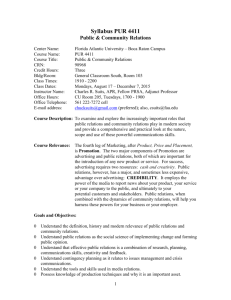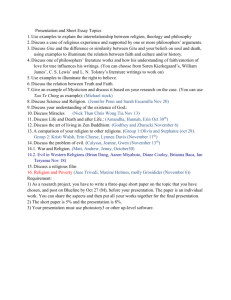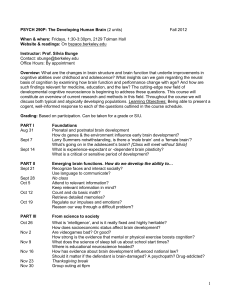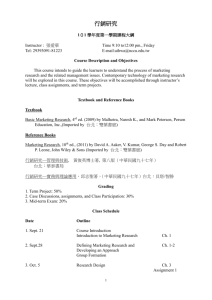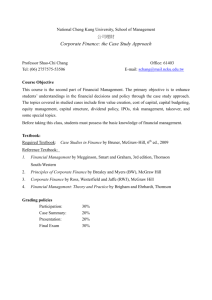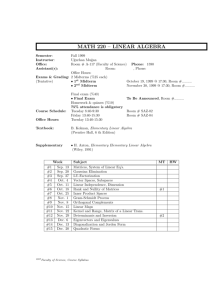ECN 4006 ECONOMICS OF INTEGRATION
advertisement
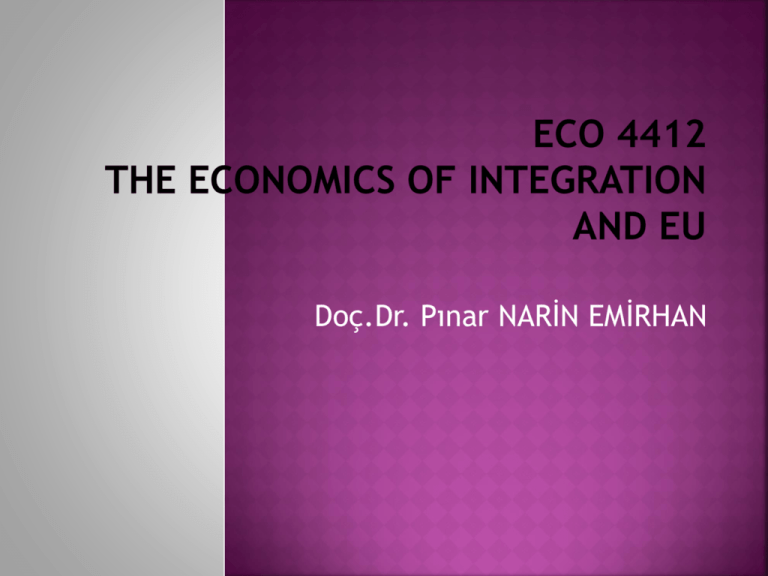
Doç.Dr. Pınar NARİN EMİRHAN The objective of this course is to introduce the students the types of economic integrations and to analyze the effects of economic integration on integrating countries. International Economic Integration is the institutional combination of seperate national economies into larger economic blocks or communities, in order to promote efficiency in resource use on a regional basis. Midterm Exam Research Paper and Presentation Total : 40 % : 60 % : 100 % Baldwin, R. And Wyplosz, C. (2006) The Economics of European Integration, Second Edition, McGraw Hill. Robson, Peter (2000) The Economics of International Integration, Fourth Edition, Routledge: London. Additional readings/articles. Date Subject Oct. 5 Introduction Oct. 12 The forms of economic integration; The theory of customs union; Topic selection by students Oct. 19 Economies of scale in a customs union; The theory of free trade areas; Submission of research proposals Oct. 26 Religious Holiday Nov. 2 CU vs. Unilateral Tariff Reductions; The theory of common markets; Announcement of presentation dates of each group Nov. 9 Integration of fiscal and monetary policies Nov. 16 A brief summary of EU hstory; APA format Nov. 23 Mid-term Examinations Nov. 30 Mid-term Examinations Dec. 7–Jan. 11 Student Presentations (6 weeks) Only suggestions not limited to these subjects! 1. Understanding Globalization Why globalization accelarated after 1990’s? Do globalization and economic integrations contradict? Why some economic integrations fail? 2. Tax harmonization in the EU Value added tax (VAT): source vs. destination principle Measures and proposals in the area of corporate taxation The Stability and Growth Pact and the coordination of macroeconomic policy 3. The EU budget and fiscal transfers Revenues Expenditures Net-payer positions 4. Agricultural subsidies and policies in the EU Price support Set aside Output subsidies Income subsidies Renewable resources and the future of agriculture 5. Cohesion (regional) Policy Objectives, instruments and principles of regional policy Structural funds and their effects Changes introduced by Agenda 2000 Effectiveness of EU cohesion policy 6. Monetary Integration in the EU Why monetary integration? The development of monetary integration in the EU The theory of optimum currency area 7. Single European Market Movement of capital Movement of labor 8. Competitiveness in the EU Industry policy The ‘Lisbon Strategy’ The EU in the world economy; International competitiveness of the EU Current economic problems of the EU (ageing societies, financial markets, etc.) 9. Enlargement of the EU Enlargement process Economic consequences of the Eastern enlargement 10. Understanding Turkey’s Relations with EU History Current situation 11. Customs Union Between Turkey and EU Costs vs. benefits Each week 2/3 groups will present their papers. Students must send to the lecturer (pinar.emirhan@deu.edu.tr) their powerpoint presentations at least 3 days prior to their presentations, otherwise 5 points will be deducted from their presentation grades. The deadline for paper submission is January 11, 2013. Papers will be submitted in both printed form and in a CD. (All papers will be uploaded to TURNITIN.) Each group will choose a subject from the list provided and will prepare a 20/30 minute presentation. During the presentation, the groups can use any technical presentation aid they consider necessary (projector, PowerPoint, internet-based material, song-and-dance, etc.), providing this does not distract the audience from the points made and the facts presented, and do not extend the presentation to beyond 20/30 minutes. The presentation should be fact-based and well organized. Each presentation must conclude by drawing contending interpretations, highlighting the signification of the issue, presenting their opinion on the issue, etc. Each presentation will be followed by a 10/15 minute comments and question session involving the other students. Everybody will have to comment, question or add to the presentation.

